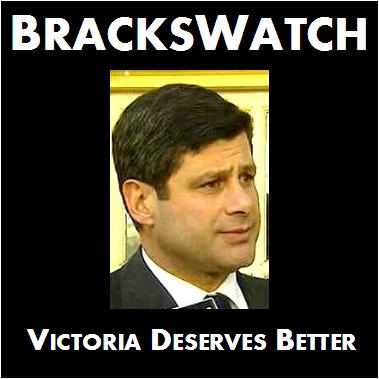Bracks should listen to country people on fires
A letter from BeechworthHERE we go again, another summer another terrifying round of bushfires.
What will it take for governments to realise that ordinary country folk know what they are talking about when they say, if you insist on having all public land tied up in irrational parks this is what will happen.
Will someone tell Premier Steve Bracks that if you don’t have enough resources to keep hazards down in and around inhabited areas, stop creating more national parks.
We must insist that larger zones around private land abutting the “neighbours from hell” be of sufficient size (100m) to get bulldozers in to at least allow private owners to have a chance to save fences and assets.
The other advice would be to stop shutting up fire tracks; I have been told by firefighters that this is a great hindrance when trying to access fires.
The resources used to close fire tracks and put in huge humps and logs should be used for hazard reduction.
How much of our private land must be destroyed before the powers that be wake up that we can help save more assets by larger divisions between private and public land?
Perhaps if the surrounds of the Thompson Dam were to burn and the resultant silt were to invade the Melbourne water people would wake up and realise what country people go through after such huge fires and be a bit more wary of what and who they vote for.
WIN MORGAN
UPDATE- Mark Webster, also from Beechworth, writes about the changes that have occured over time with regards to fighting the fires.
Labels: Emergency Services, Letter To Editor, Rural


4 Comments:
http://www.bordermail.com.au/news/bm/letters/592564.html
Firefight made much harder 28/12/2006
I AM writing to commend the article recently published in The Border Mail written by Mr Athol Hodgson, where he stated the DSE was better prepared to fight these fires in 1985.
In the 1985, Bright fires there were four foresters, five forest officers, a forest assessment forester, two vermin and noxious weeds inspectors and eight rangers representing the fire sector commanders and incident controllers.
These officers were hands on and knew what was achievable by rake, hoe and bulldozer.
The permanent works crew was numbered at around 22 in total, with support by as many as 15 seasonal firefighters.
The permanent works crew’s leading hands and skilled and experienced long-term staff were the team leaders.
We had around 10 x 400 litre fire units, three heavy tankers, a first attack bulldozer, a large D7 dozer, a grader, a tip truck, a tractor for slashing fire breaks, and a loader.
All of these personnel annually used fire and fire research to manage our forests and try to prevent major fires.
These resources were replicated in the forest areas of Myrtleford, Beechworth, Tallangatta, Corryong, Shelley, Benalla, Mansfield and smaller depots at Whitfield, Mitta, Chiltern, Tawonga and Yarrawonga, and a regional office in Wangaratta.
All of the 1985 staff and resource levels were the culmination of the implementation of the coroner’s recommendations from the 1939 bushfires.
It is unfortunate that since 1985 the department has been upsized in administration areas, downsized at operational areas, and corporatised.
The department has also been restructured to death and had its assets sold off.
DSE and the privatised plantations are expected to do more with less, including fighting these fires.
There are currently no forest officers, lands department inspectors or foresters at Bright.
There are about seven or eight rangers, three permanent works crew a small first attack dozer.
So what has successive governments done?
Corporatised and sold off the assets, including human assets.
The cost to the people of Victoria can be seen in every newspaper and television news report every day this summer.
The ministerial correspondence unit will respond to this article by stating that they have x amount of trained firefighters which is a historical high.
This is rubbish as office based personnel trained in the incident management team doesn’t equate to fully trained and experienced on ground operational firefighters or expert forestry incident management teams.
At all levels of fire training, emphasis is placed on the value of local knowledge, so at Bright instead of 40 heads holding this local knowledge we now have 10.
I wonder whether the State Government will even allow a coronial investigation.
— MARK WEBSTER,
Beechworth
Interestingly, the Thomson Dam catchment was the most heavily defended area here in Gippsland in the recent fires.
The resources that went into this catchment protection, and arguably allowed the fire to continue to spread elsewhere, was incredible. Would love to know the bill for that.
I personally blame Bracks, Brumby and the entire labor regime for the disastrous 2010 Bushfires that killed hundreds of Victorians!!! What an obscene disgrace. And they put morons like Christine "IHAVE2EAT Nixon" who was more interested in having a long dinner with her girlfriends when half of country Victoria was on fire. Who recommended her? Joan Kirner!!!
Its too late to save the people killed in the 2010 Bushfires. Whose fault is it? LABOR. They fiddled while Victoria was burning and 200+ Victorians burnt alive. They had 10 years to do the necessary backburning - but they had so-called scientists who prevented the work from being done - and did some stupid things like planting gum trees in fire breaks and under power electric poles.
Post a Comment
<< Home